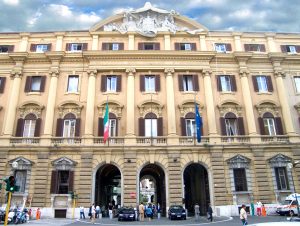The thing we’ve experienced during this Covid-time is that digital technology is our present and our future. We can’t live without its in any human activities. Digital technology and infrastructures have a critical role in our private and public lives, or in the business sector: we rely on them to communicate, work, advance science, build a zero-impact society.
It seems that we need to tackle two different strategies as the unique pathway to run towards a more sustainable world: the digital transition and the ecological transition. Making the Green Deal real means re-thinking about technology and more widely ethical, philosophical, engineering, political aspects around adoption, computing, artificial intelligence, digital divide, and others. And, in the meantime, regenerate natural resources.
Five crucial areas to boost
The European Commission is starting a financial program – the Digital Europe Programme (DIGITAL) – to provide strategic funding in five crucial areas:
- high-performance computing (HPC), raising its scientific potential and industrial competitiveness in supercomputing, for exascale machines; upgrading existing ones like Quantum Computing; widening the use of them
- Artificial Intelligence‑based solutions to deploy in critical areas like climate change or health
- cybersecurity to ensure the resilience, integrity and trustworthiness of European critical networks, infrastructures and services
- advanced digital skills for special education programs and trainingships
- ensuring a wide use of digital technologies across the economy and society, including through Digital Innovation Hubs
Financial resources to fill the gap
The Digital Europe Programme worths €7.610,100 billion euros (2021-2027). It aims to fill the gap between research and deployment of digital technologies. It will bring the results of research to the market for the benefit of Europe’s citizens and businesses, in particular, small and medium-sized enterprises SMEs.
Following a systemic approach, the Programme will works side by side with other EU programmes, such as the Horizon Europe programme for research and innovation and the Connecting Europe Facility for digital infrastructure, the Recovery and Resilience Facility and the Structural Funds. The financial perspective is the new Multiannual Financial Framework (MFF €1.21 trillion), which strongly supports DIGITAL to ensure also a quick recovery from the pandemic.
Leading the digital age
Actions focused on Artificial Intelligence, advanced digital skills and widening the best use of digital technologies, are directly managed by the European Commission with the support of the Executive Agency for Health and Digitalisation. The HPC actions are implemented primarily through the EuroHPC joint undertaking. Cybersecurity actions are implemented primarily through the European Cybersecurity Industrial, Technology and Research Competence Centre and the Cybersecurity Competence Network.
The leading EU Commission Department is the Directorate‑General for Communications Networks, Content and Technology (CONNECT).
INTERLINK project for DIGITAL
The European Commission with its Digital Single Market Strategy lead the e-governance transformation which recognised that digital technologies had great potential to help PAs deliver better services for less. But we have many examples of successful “Do It Yourself Government” (Citizen to Citizen, C2C). In these cases, citizens help themselves and other citizens, and the government plays no active role in day-to-day activities but may provide a facilitating framework.
INTERLINK ambition as a Horizon 2020 funded project is to develop a new collaborative governance model that promotes the reuse and sharing of existing public services leveraging on the partnership between citizens, private actors and public administrations. In INTERLINK, following we define this as Public-civic partnership among Government and Citizens (G+C) indicating that government and citizens (and other private actors) share equal power and responsibility.
Photo by ThisisEngineering RAEng on Unsplash





